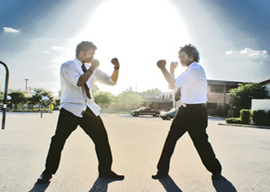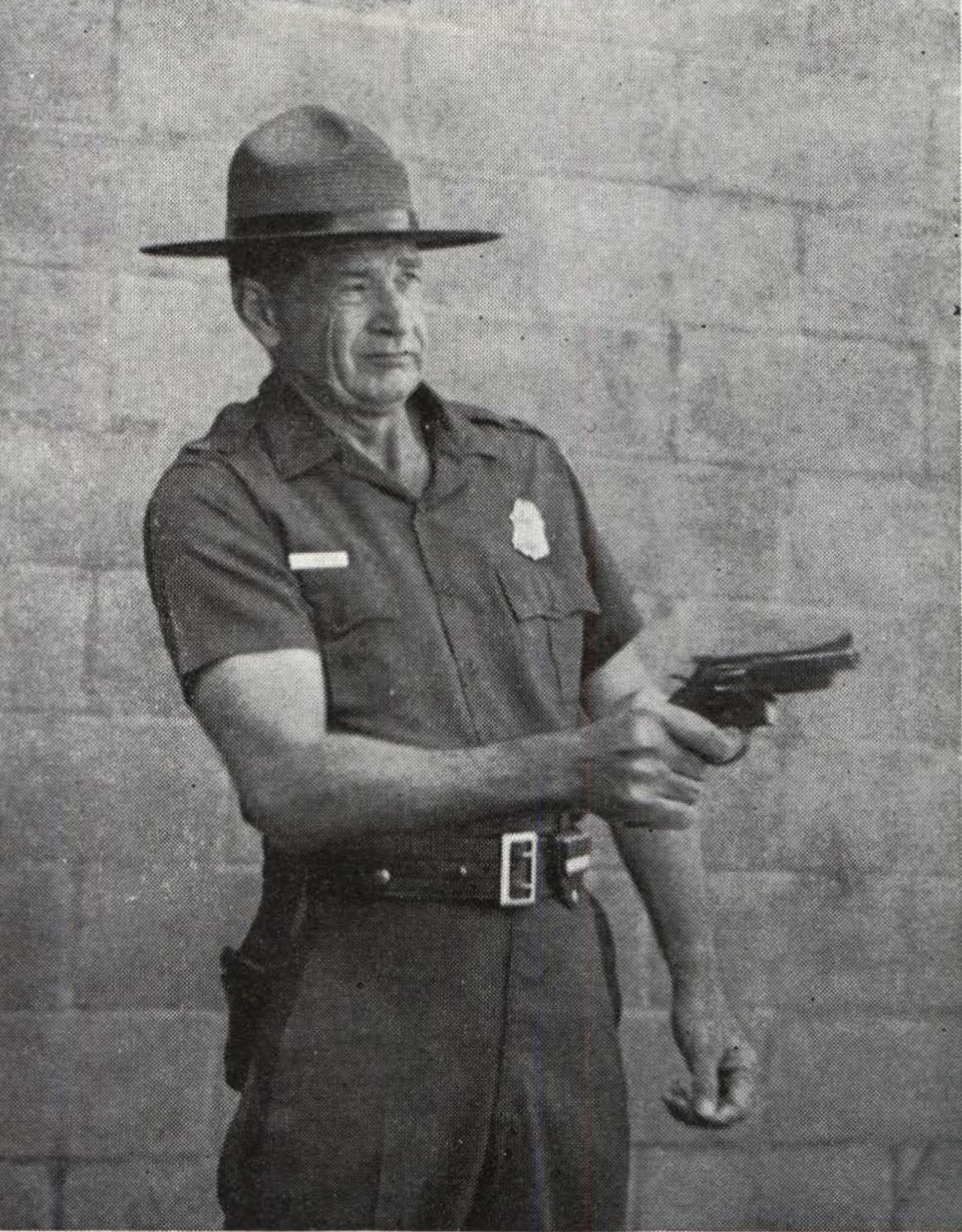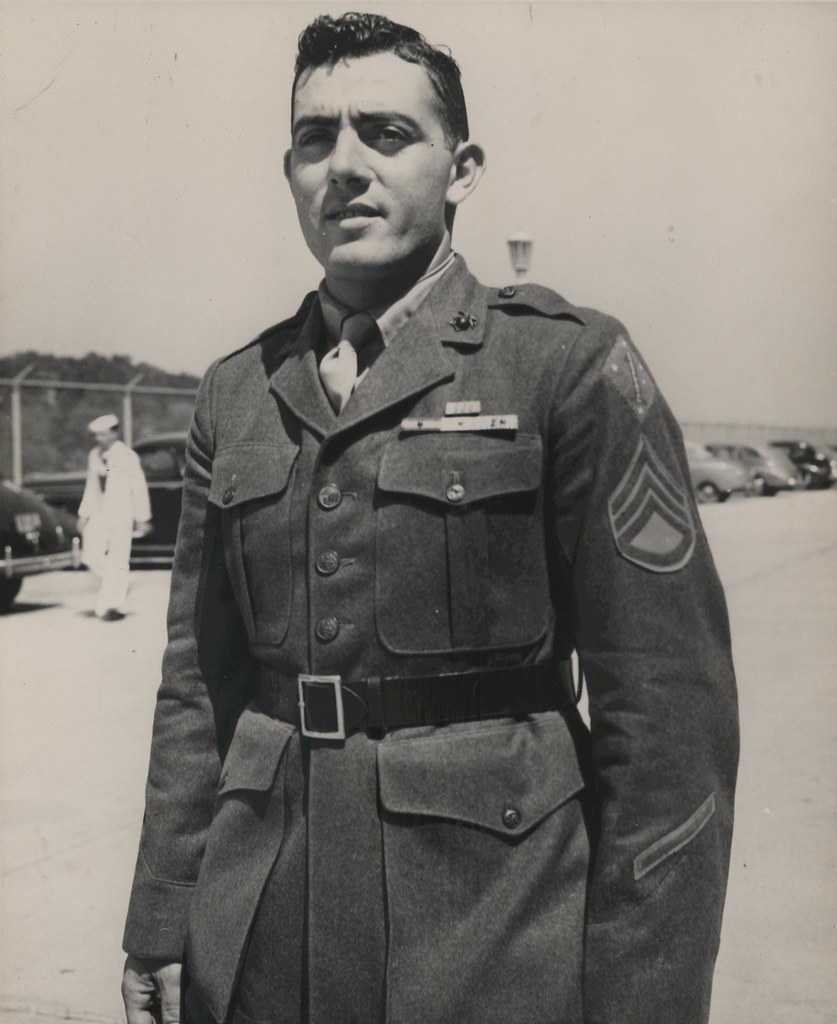MilSurp: British Infantry Weapons of World War II: The Tools Tommies Used to Beat Back the Bosche
On the night of June 5th, 1944, a force of 181 men commanded by Major John Howard lifted off from RAF Tarant Rushton aboard six Horsa gliders. Their force consisted of a reinforced company from the Oxford and Bucks Light Infantry along with twenty sappers drawn from the Royal Engineers. Their objective was to seize the bridge over the Caen Canal and subsequently secure the eastern flank of the Allied landings at Sword beach. Theirs was arguably the most critical piece in the entire D-Day invasion.

The Webley revolver was a break-open double action design that fired a relatively anemic .38/200 rimmed cartridge.
Any amphibious operation is tenuous until a lodgment is established. At first the advantage always goes to the defender. No matter the intensity of the pre-operation bombardment, the outcome ultimately turns on the fortitude of the attackers pitted against the fortitude of the defenders. This bridge was the choke point for German armor that might have attempted to reinforce the defenders on the beach.
The invasion, code named Operation Overlord, was indeed an iffy thing. Had the Allies hit the beaches and found them populated with the fully armed tanks of the German 21st Panzer Division then they very likely could have been pushed back into the sea. General Eisenhower, the Supreme Allied Commander, had actually prepared a letter assuming full responsibility for the failure of this operation had this been the case. Thanks to Major Howard and his 181 British Glider-borne soldiers this letter went unused.
Five of the British gliders landed as close as 47 meters to the objective at 16 minutes past midnight. Considering these glider pilots made a silent unpowered approach in utter darkness this represents some of the most remarkable pilotage of the war. These brave British soldiers poured out of their wrecked gliders and took the bridge in short order.

The Short Magazine Lee-Enfield (SMLE) was a superb bolt-action design that served the British well during the First World War.
Lance Corporal Fred Greenhalgh was thrown clear of his glider on impact and knocked unconscious. He landed face first in a shallow pond no more than six inches deep but subsequently drowned. Lieutenant Den Brotheridge stormed the bridge firing his Sten gun and throwing grenades until he was mortally wounded by German machinegun fire. Greenhalgh and Brotheridge were the first Allied soldiers killed on D-Day.
At around 0200 the lead armored vehicle of German 21st Panzer rounded a corner and drove between two buildings that defined the approach to the bridge. Alerted by the sound of tracks in the darkness, Major Howard had dispatched Sergeant Charles “Wagger” Thornton with the unit’s last operational PIAT launcher and two hollow-charge projectiles. Thornton covered himself in garbage and had been in place around three minutes when the first tank arrived.
There is a dispute as to the type of vehicle involved. It has been reported to be either a Panzerkampfwagen Mark IV or a Marder open-topped self-propelled gun. Regardless, no doubt thoroughly terrified, Sergeant Thornton loosed his PIAT bomb at a range of 27 meters and center-punched the vehicle, igniting its onboard ammunition. The destroyed vehicle subsequently effectively sealed off the approaches to the landing areas from reinforcing German armor. As a result, Sergeant Thornton’s single desperate PIAT shot very probably saved the entire invasion.

The Lewis gun was an American design that was used extensively during WW1. Obsolete by 1940, the Lewis nonetheless soldiered on in second-line applications throughout the war. The most distinguishing characteristics of the Lewis were its bulbous barrel shroud and top-mounted pan magazine.
Weapons
That the British Army survived the evacuation at Dunkirk is a legitimate modern-day miracle. While more than 300,000 troops survived, they arrived in Britain exhausted, demoralized, and bereft of their weapons. Desperate to refit and re-equip in the face of an expected German invasion, the English military leadership initiated a crash program to produce small arms in breathtaking quantities.
It is easy to disparage the quality of British small arms from the comfort of our living rooms. However, the British people rightfully feared imminent invasion. Had Hitler not foolishly launched Operation Barbarossa in an attempt to conquer Russia they would have undoubtedly seen German troops on British soil. As a result, the British endured some shortcuts in both the quality and design of their small arms. That they still fared so well is a testimony to the grit and tenacity of the British fighting man and his leadership.
Handguns
At a time when the entire world was issuing autoloading handguns, the British persisted in issuing revolvers that were state of the art during the previous world war. Given the desperate pressures under which they operated British industry simply continued producing the handguns they were already tooled up to produce. Webley and Enfield revolvers were morphologically similar. Both were break-open designs that incorporated an automatic ejector to remove empty shell casings. While some earlier versions were chambered for a powerful .455 round, most WW2-era versions were .38’s.
Early WW1-era Webley Mk I’s fired the rimmed .455 round. However, many were subsequently converted to fire rimless .45ACP ammunition by having the faces of their cylinders shaved down appropriately. Rimless .45ACP rounds were subsequently managed via moon clips. This conversion allowed the continued issue of .455 Webleys after the supply of .455 rimmed ammunition was exhausted.

The star-shaped ejector on the Webley and Enfield revolvers automatically expelled the empty cases when the gun was broken open for reloading.
The most common WW2-era Webley was the Mk IV chambered for the .38/200 round. This round is 9x20mm and is interchangeable with the .38 S&W cartridge. By comparison the ubiquitous .38 Special is 9×29.5mm and much more powerful. The No2 Mk 1 Enfield fired the same round. However, the hammer was bobbed on the Enfield to affect double action only. This weapon was intended for use in tanks, aircraft, and vehicles for applications that might require that a sidearm be used one-handed.
The 4-1-1 on Handguns During Combat
Handguns of any sort seldom affect the big picture in combat. They serve as badges of rank or security talismans, but the pistol does not win wars. As such, though their revolvers were dated when compared to other autoloading designs, this made little difference in the grand scheme.

The PIAT was a monstrosity of a weapon that used a spring-driven piston to fire shaped-charge antitank warheads.
Rifles
The British began World War 2 with the SMLE (Short Magazine Lee-Enfield). This superb bolt-action design armed British Tommies in the fetid trenches of World War 1. As the SMLE cocked on closing it provided a greater rate of fire than other designs that cocked when the bolt was opened. As the scope of the war and its commensurate logistics demands grew, however, the British Army needed something cheaper and easier to produce.

The British Sten gun was simple, inexpensive, and effective. Sporting a left-sided magazine and remarkably sedate rate of fire, the Sten was found throughout all combat theaters of World War 2.
The No 4 Mk 1 Lee-Enfield was a product-improved version of the SMLE. This rifle retained the 10-round magazine and .303 chambering of the SMLE. And it deleted the SMLE’s magazine cutoff and, ultimately, its complicated adjustable sight. The No 4 was heavier and slightly more robust than the SMLE, but it was much easier and faster to produce.
The rimmed .303 cartridge was obsolete by World War 2. However, like the Lee-Enfield rifle, this was what British industry was tooled up to produce. As a result, both the No 4 Lee-Enfield and its tired round soldiered on through WW2 and well beyond. Once again, the English were forced to make do with what they had.
Submachine Guns
The British had no general-issue submachine gun at the beginning of the war. They made do with expensive, heavy, and obsolete Thompson guns purchased from the United States. In desperate need of something inexpensive and easy to build, English gun designers Major Reginald Shepherd and Harold Turpin set out to contrive the ultimate mass-produced pistol caliber submachine gun. The name Sten is drawn from the first letters of the designers’ names along with Enfield.

The Bren Light Machinegun was arguably the finest LMG of the war. Portable and reliable, the Bren offered dismounted Infantry a mobile base of fire that could accompany troops in the assault.
Sten
The British produced the Sten gun using components produced in tiny shops across the island. There were seven marks and around four million copies rolled off the lines. Unit cost in WW2 was around $10 or $156 today. Most Stens used a simple drawn steel tube as a receiver and fed from the left side via a double column, single feed 32-round magazine. All Stens were selective fire. Most incorporated a rotating magazine housing that could be positioned to seal the ejection port from battlefield grunge.
Mk IIS
The Mk IIS included an integral sound suppressor, a revolutionary feature for the day, as well as a bronze bolt. The Mk III was the simplest of the lot and incorporated a simple welded on magazine housing and a pressed steel receiver. The Sten was not the most reliable gun on the battlefield but it was widely distributed through both British combat formations as well as underground partisans operating in occupied territories.
Machinegun
The Brits used Vickers and Lewis guns at the beginning of the war, some of which served until the armistice. The Vickers was an English adaptation of the same Hiram Stevens Maxim design that drove the German Maxim MG08 guns during WW1. Heavy, water-cooled, and imminently reliable, the Vickers was a superb sustained fire weapon when employed from vehicles or static mountings. It was useless in a mobile ground assault, however.
The BREN gun was arguably the finest light machinegun used by any major combatant. A license-produced copy of the Czech ZGB-33, the Bren fired from the open bolt and fed from top-mounted 30-round box magazines. It had a rate of fire of around 500 rounds per minute. The BREN gave the dismounted Infantry squad a portable base of automatic fire that could maneuver with dismounted ground forces. Though heavy by today’s standards, the BREN was rugged and dependable.
The PIAT
The weapon Wagger Thornton used to save D-Day was the Projector, infantry, Anti-Tank. This monstrosity of an anti-tank weapon was actually a handheld spigot mortar. The PIAT incorporated a spring-driven piston that extended into the base of its hollow-charge projectile. It would then ignite a propellant charge. The prodigious recoil of the shot should theoretically recock the heavy spring action. The PIAT weighed 32 pounds and had a maximum effective range of 115 yards. Sergeant Thornton later described the PIAT as “Rubbish, really” in a post-war interview.

The Vickers machinegun was a water-cooled belt-fed behemoth intended to be fired from fixed positions.

The PIAT was a monstrosity of a weapon that used a spring-driven piston to fire shaped-charge antitank warheads.
Gestalt
The British fought and won WW 2 with a hodgepodge of obsolete weapons mass-produced via a disseminated industrial base with their backs literally against the sea. While they lacked a semiautomatic handgun or an autoloading Infantry rifle, their Bren gun was enormously effective. And the PIAT did indeed save D-Day. In the final analysis, it was the men behind the weapons, and not the weapons themselves, that wrested control of mainland Europe from the grip of Nazi tyranny.

































